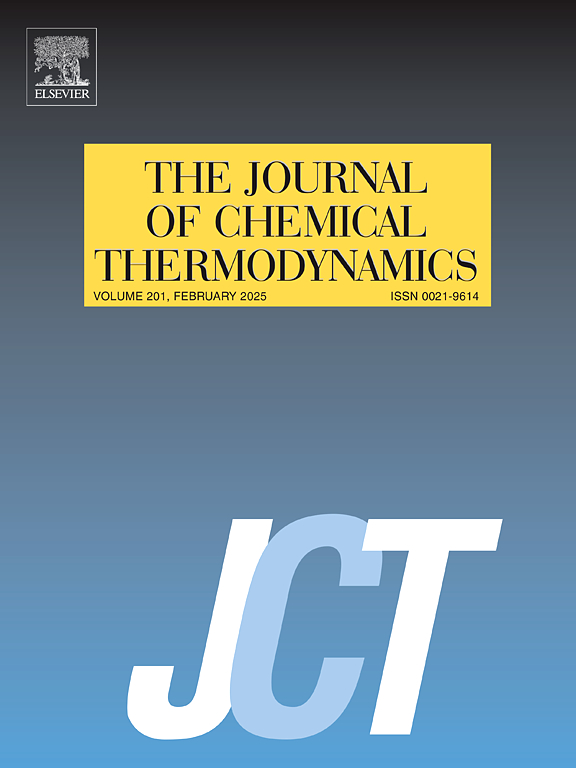Relationship between enthalpy and volume changes on melting: a case study of eight cyclic organic compounds
IF 2.2
3区 工程技术
Q3 CHEMISTRY, PHYSICAL
引用次数: 0
Abstract
The study of structural parameters that influence the thermodynamics of melting of organic compounds is many decades old. Our recent work revealed a relationship between fusion enthalpy, molar volume change on melting, and molecular structure. In this paper, we continued to analyze the relationship between the shape of the molecule and the thermodynamic properties of melting through a comprehensive study of eight cyclic organic compounds. The fusion enthalpies were determined by DSC, and the densities in the liquid state in the temperature range from Tm to 343 K were measured using a high-precision density meter. The predictive capability of the previously established linear correlation between the molecular sphericity parameter and the ratio between the enthalpy and molar volume changes on melting was confirmed using the experimental data in combination with literature values of crystal phase densities. The above ratios were predicted with RMS of 9 %, which is comparable with the combined experimental accuracy and beyond the known predictive approaches. In addition, the reliability of the molecular dynamics method in the evaluation of the liquid density at the melting temperature was tested and confirmed, which enables the replacement of the experimental procedure for the liquid density measurement when calculating the enthalpy-to-volume changes ratio according to the correlation found.

熔融过程中焓与体积变化的关系:以八种环状有机化合物为例
影响有机化合物熔化热力学的结构参数的研究已有几十年的历史。我们最近的工作揭示了熔化焓、熔化时摩尔体积变化和分子结构之间的关系。在本文中,我们通过对八种环状有机化合物的综合研究,继续分析分子形状与熔融热力学性质之间的关系。用DSC法测定了熔合焓,用高精度密度计测定了熔合焓在Tm ~ 343 K范围内的液态密度。用实验数据结合文献中晶体相密度的数值,证实了先前建立的分子球度参数与熔化时焓与摩尔体积变化之比的线性关系的预测能力。上述比率的预测RMS为9%,与综合实验精度相当,超出了已知的预测方法。此外,测试并证实了分子动力学方法在熔融温度下评价液体密度的可靠性,从而可以根据发现的相关性计算焓容变化比时替代实验方法进行液体密度测量。
本文章由计算机程序翻译,如有差异,请以英文原文为准。
求助全文
约1分钟内获得全文
求助全文
来源期刊

Journal of Chemical Thermodynamics
工程技术-热力学
CiteScore
5.60
自引率
15.40%
发文量
199
审稿时长
79 days
期刊介绍:
The Journal of Chemical Thermodynamics exists primarily for dissemination of significant new knowledge in experimental equilibrium thermodynamics and transport properties of chemical systems. The defining attributes of The Journal are the quality and relevance of the papers published.
The Journal publishes work relating to gases, liquids, solids, polymers, mixtures, solutions and interfaces. Studies on systems with variability, such as biological or bio-based materials, gas hydrates, among others, will also be considered provided these are well characterized and reproducible where possible. Experimental methods should be described in sufficient detail to allow critical assessment of the accuracy claimed.
Authors are encouraged to provide physical or chemical interpretations of the results. Articles can contain modelling sections providing representations of data or molecular insights into the properties or transformations studied. Theoretical papers on chemical thermodynamics using molecular theory or modelling are also considered.
The Journal welcomes review articles in the field of chemical thermodynamics but prospective authors should first consult one of the Editors concerning the suitability of the proposed review.
Contributions of a routine nature or reporting on uncharacterised materials are not accepted.
 求助内容:
求助内容: 应助结果提醒方式:
应助结果提醒方式:


